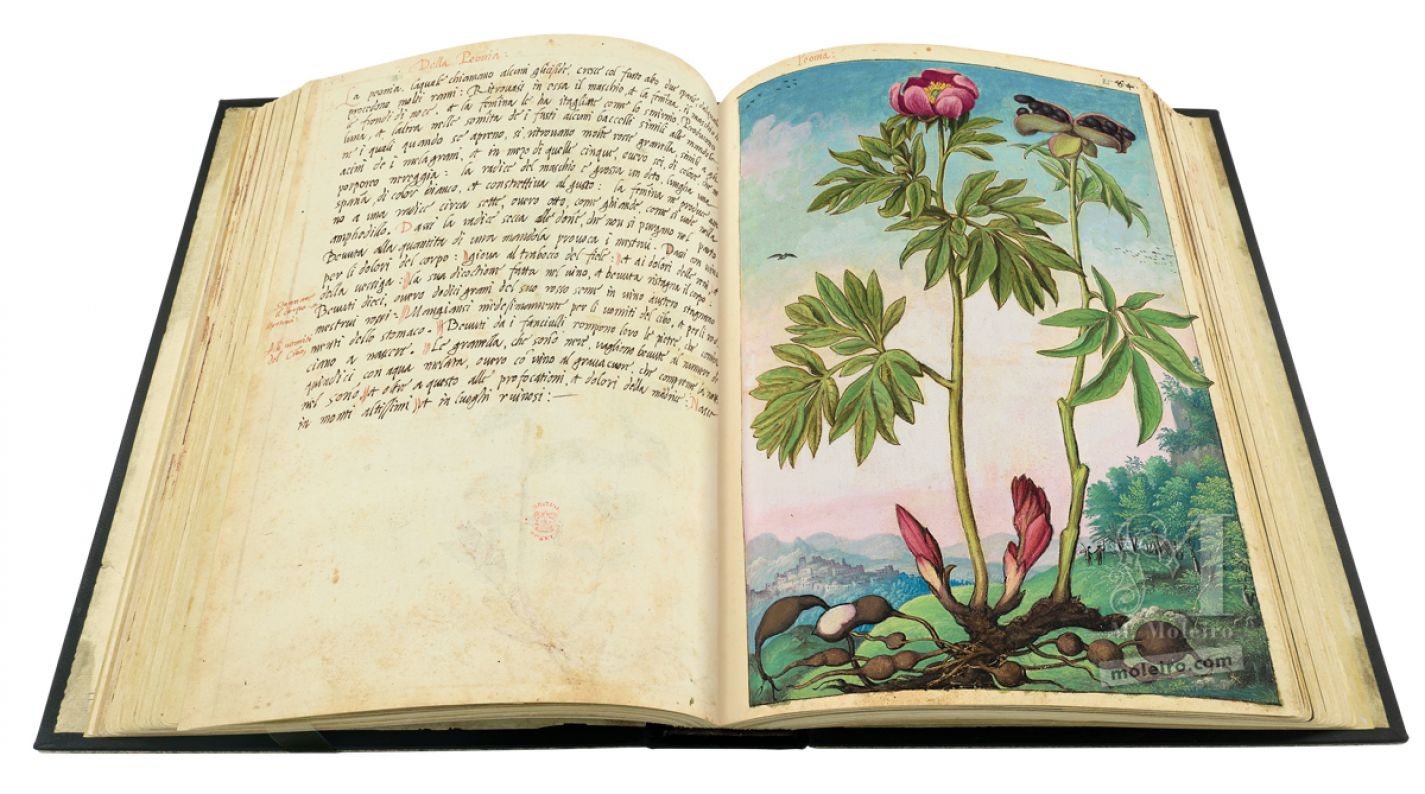Paeony (Paeonia officinalis), ff. 84v-85r
"The paeony, which some call glycyside, grows with a stem two spans high, from which come numerous side shoots. Two kinds of paeony are found: the male and the female; the male has leaves like those of the walnut and the leaves of the female have toothed edges like the alexanders. Both of them produce pods at the top of the stem, similar to almonds, inside which are found, when they are opened, many red seeds, similar to those of the pomegranate, and among them five or six purple ones, tending towards black. The root of the male is as thick as a finger, one span long, white in colour, and astringent in taste; round the root of the female are seven or eight nodes, like acorns, as is seen in the asphodel. The dry root is given to women who were not purged during childbirth; drunk in the quantity of an almond, it brings down the menstrual flux. It is given with wine for stomach pains, and is beneficial for excess of bile, colic in the kidneys, and pains in the bladder. A decoction of it, made with wine and drunk, controls bowel movements {on the margin: checks bodily and menstrual fluxes}; ten or twelve of the red seeds, drunk in a bitter wine, stem the menstrual flow. They can also be eaten to stop the vomiting of food and strong stomach pains {on the margin: vomiting}. Drunk by children, they dissolve any stones as they form. Fifteen of the black grains, drunk with honeyed water or with wine, are good against the anguish that oppresses sleep at night and also against suffocation and pains of the uterus. It grows in the highest mountains and in steep craggy places" (f. 84v).
This plant grows in forests in northern and central Italy, northern and eastern Spain, France and almost everywhere in continental Europe as far as the Caucasus. Its rhizomatous and tuberous roots contain alkaloids and anthocyanins. Its leaves contain vitamin C. It was regarded as an apotropaic plant, i.e. one that staves off evil. It has vasoconstrictor properties, i.e. it narrows blood vessels, and is also a coagulant. It used to be administered after childbirth. According to ancient pharmacopoeias, it was a remedy for epilepsy, paralysis, headaches and dizziness. It has antispasmodic and anti-inflammatory properties, can reduce blood pressure and is a sedative. The tincture of the fresh root is used in homeopathy.
Ramón Morales
Real Jardín Botánico de Madrid
(Excerpt from the study book of Mattioli's Dioscorides illustrated by Cibo)
